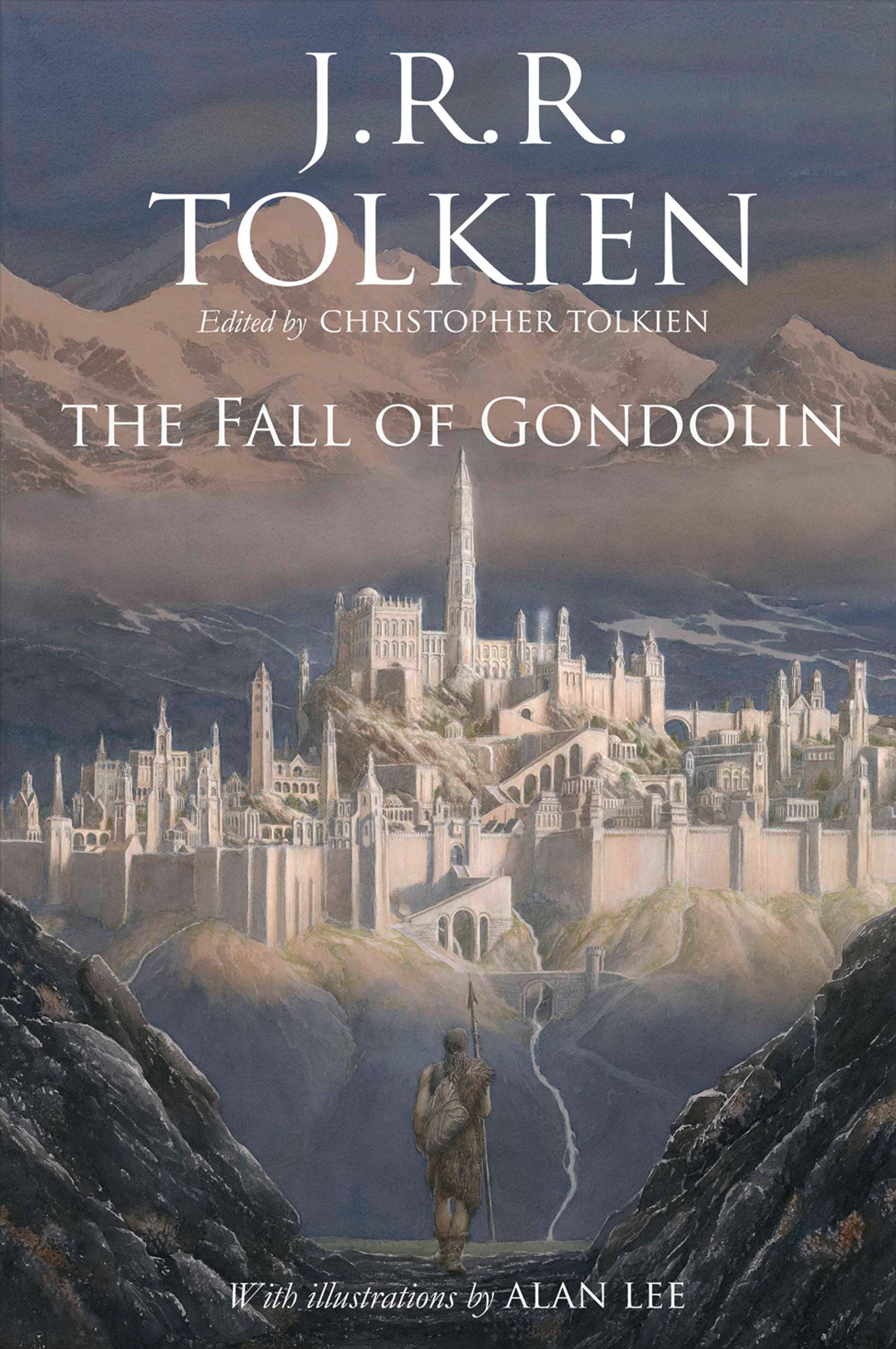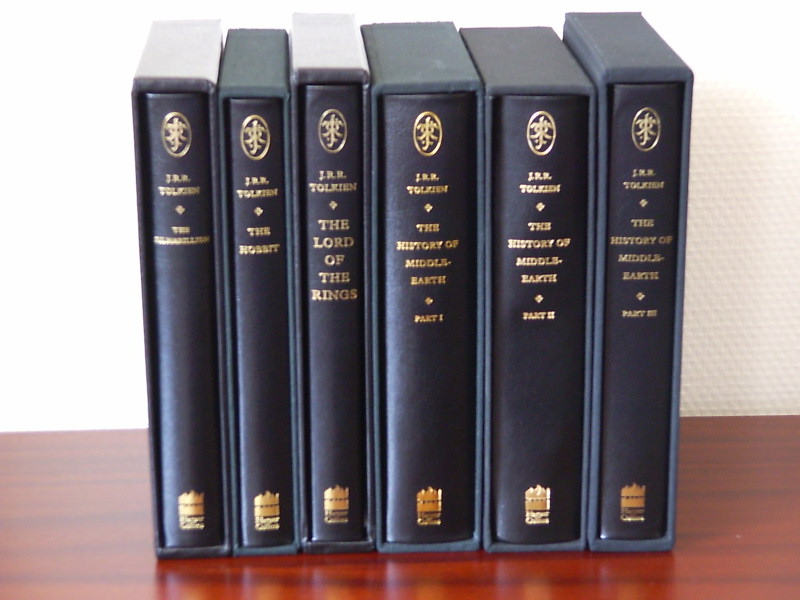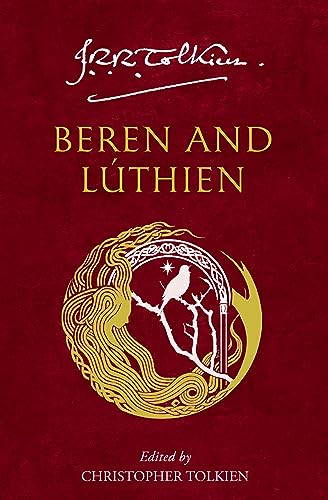The Fall of Gondolin
10 Apr, 2018
(edited)
2018-4-10 6:26:12 PM UTC
2018-4-10 6:26:12 PM UTC
Today HarperCollins has officially announced the forthcoming release of The Fall of Gondolin, on August 30 2018.
While hints and thoughts on this have been circulating since late March, it is now confirmed to not be an elaborate April Fools joke.
The official press release from HarperCollins reads:
The Guardian interviewed John Garth for the release, with some interesting additional background for the story and how it developed.
Nelson Goering shared the following thoughts on Facebook (and gave kind permission to reproduce here) discussing the "three Great Tales" quote from the press release:
Also it should be mentioned that letter 115 from 1948 also calls out these "long" tales:
Also of note is Christopher's Preface to The Children of Húrin:

While hints and thoughts on this have been circulating since late March, it is now confirmed to not be an elaborate April Fools joke.
The official press release from HarperCollins reads:
HarperCollins is proud to announce the publication in August 2018 of THE FALL OF GONDOLIN by J.R.R. Tolkien, edited by Christopher Tolkien and illustrated by Alan Lee. The book will be published in the USA by Houghton Mifflin Harcourt and in other languages by numerous Tolkien publishers worldwide.
Completing this connected ‘trilogy’ of Middle-earth tales – begun with the Sunday Times and international bestselling The Children of Húrin in 2007, with Beren and Lúthien following in 2017 – this new volume will similarly include drawings and colour plates by Alan Lee, who also illustrated The Lord of the Rings and The Hobbit and went on to win an Academy Award for his work on The Lord of the Rings film trilogy.
About the book:
In the Tale of The Fall of Gondolin are two of the greatest powers in the world. There is Morgoth of the uttermost evil, unseen in this story but ruling over a vast military power from his fortress of Angband. Deeply opposed to Morgoth is Ulmo, second in might only to Manwë, chief of the Valar: he is called the Lord of Waters, of all seas, lakes, and rivers under the sky. But he works in secret in Middle-earth to support the Noldor, the kindred of the Elves among whom were numbered Húrin and Túrin Turambar.
Central to this enmity of the gods is the city of Gondolin, beautiful but undiscoverable. It was built and peopled by Noldorin Elves who, when they dwelt in Valinor, the land of the gods, rebelled against their rule and fled to Middle-earth. Turgon King of Gondolin is hated and feared above all his enemies by Morgoth, who seeks in vain to discover the marvellously hidden city, while the gods in Valinor in heated debate largely refuse to intervene in support of Ulmo's desires and designs.
Into this world comes Tuor, cousin of Túrin, the instrument of Ulmo's designs. Guided unseen by him Tuor sets out from the land of his birth on the fearful journey to Gondolin, and in one of the most arresting moments in the history of Middle-earth the sea-god himself appears to him, rising out of the ocean in the midst of a storm. In Gondolin he becomes great; he is wedded to Idril, Turgon's daughter, and their son is Eärendel, whose birth and profound importance in days to come is foreseen by Ulmo.
At last comes the terrible ending. Morgoth learns through an act of supreme treachery all that he needs to mount a devastating attack on the city, with Balrogs and dragons and numberless Orcs. After a minutely observed account of the fall of Gondolin, the tale ends with the escape of Tuor and Idril, with the child Eärendel, looking back from a cleft in the mountains as they flee southward, at the blazing wreckage of their city. They were journeying into a new story, the Tale of Eärendel, which Tolkien never wrote, but which is sketched out in this book from other sources.
Following his presentation of Beren and Lúthien Christopher Tolkien has used the same 'history in sequence' mode in the writing of this edition of The Fall of Gondolin. In the words of J.R.R. Tolkien, it was ‘the first real story of this imaginary world’ and, together with Beren and Lúthien and The Children of Húrin, he regarded it as one of the three 'Great Tales' of the Elder Days.
The Guardian interviewed John Garth for the release, with some interesting additional background for the story and how it developed.
Nelson Goering shared the following thoughts on Facebook (and gave kind permission to reproduce here) discussing the "three Great Tales" quote from the press release:
The exciting announcement about the upcoming publication of 'The Fall of Gondolin' notes that this will complete the trifecta of the three 'Great Tales' summarized in the later parts of The Silmarillion:
'Following his presentation of Beren and Lúthien Christopher Tolkien has used the same ‘history in sequence’ mode in the writing of this edition of The Fall of Gondolin. In the words of J.R.R. Tolkien, it was ‘the first real story of this imaginary world’ and, together with Beren and Lúthien and The Children of Húrin, he regarded it as one of the three ‘Great Tales’ of the Elder Days.'
Certainly the publication of three modern books -- CoH from 2007, B&L from 2017, and now Gondolin -- matches quite nicely with the idea of three 'Great Tales'. But where does the idea that there are three particularly outstanding tales from the 'Silmarillion' tradition come from? As far as I can tell, it's just from one note, 'entirely isolated' and 'carefully typed', bearing the heading 'Memorandum', which Tolkien wrote sometime in the 1950s or 60s:
'The three Great Tales must be Númenórean, and derived from matter preserved in Gondor. They were part of the _Atanatárion_ (or the Legendarium of the Fathers of Men). ?Sindarin _Nern in Edenedair_ (or _In Adanath_).
They are (1) _Narn Beren ion Barahir_ also called _Narn e-Dinúviel_ (Tale of the Nightingale)
(2) _Narn e-mbar Hador_ containing (a) _Narn i-Chîn Húrin_ (or _Narn e-'Rach Morgoth_ Tale of the Curse of Morgoth); and (b) _Narn en-Êl_ (or _Narn e-Dant Gondolin ar Orthad en-Êl_)
Should not these be given as Appendices to the _Silmarillion_?'
(Morgoth's Ring, p. 373)
As far as I know, this is the only reference to there being specifically three 'Great Tales'. In his original conception, there were perhaps already hints that the Fall of Gondolin and the voyages of Earendil would have a special association, but they seem to be conceived of as basically distinct tales (among others). We find in the Book of Lost Tales:
The Tale of Tinúviel
Turambar and the Foalókë
Tuor and the Exiles of Gondolin (which bringeth in the great ale of Eärendel) [usually referred to as 'The Fall of Gondolin']
The Nauglafring: The Necklace of the Dwarves
And the 'Tale of Eärendel', which was meant to follow closely from Gondolin, but was clearly envisioned as a distinct entity -- or even collection of stories in its own right (one outline presents it as a tale in seven parts).
His poetic projects of the 1920s also approached these as distinct entities. Leithian and the 'Golden Dragon' are each substantial projects, but Tolkien began work both on 'The Lay of the Fall of Gondolin' and an apparently quite distinct work that seems to be a 'Lay of Eärendel'.
Later on, things are less clear, partly because Tolkien never really worked on an Earendil story to any meaningful extent. In his famous 1951 letter to Milton Waldman (#131), he does distinguish the 'Fall of Gondolin' from 'the tale, or tales, of _Earendil the Wanderer_'. And there is no hint that 'Of Tuor and his coming to Gondolin' was intended to encompass the Earendil story as well.
The late note from Morgoth's Ring seems to represent quite a new way of looking at the relationships between these tales, only developed later in the 50s or 60s. It's systematizing in more way than one, really. Both the Lost Tales and the letter to Milton Waldman just present these as major stories from within a larger cycle -- particularly fully treated, perhaps, but not a distinct, named sub-cycle. The late note, however, does single these tales out and even give the sub-portion of the Legendarium Elvish names. It further links the Children of Húrin particularly closely to the the Gondolin-Earendil saga, so that it's almost just a binary set of two broad tale groups.
So while I think including Earendil as just a later part of Gondolin is appropriate -- and certainly practical, given that Earendil could hardly fill a book -- I think it's worth bearing in mind that this was really quite a late (and potentially transient) link on Tolkien's part, even if the close narrative connections are both obvious and old.
Also it should be mentioned that letter 115 from 1948 also calls out these "long" tales:
You may find the ‘compendious history’ or Silmarillion tolerable – though it is only really half-revised. The long tales out of which it is drawn (by ‘Pengolod’) are either incomplete or not up to date.
The Fall of Gondolin
The Lay of Beren and Lúthien (verse)
The Children of Húrin
Tolkien, J.R.R.. The Letters of J.R.R. Tolkien (Kindle Locations 2763-2767). Houghton Mifflin Harcourt. Kindle Edition.
Also of note is Christopher's Preface to The Children of Húrin:
Among the Lost Tales three were of much greater length and fullness, and all three are concerned with Men as well as Elves: they are The Tale of Tinúviel (which appears in brief form in The Lord of the Rings as the story of Beren and Lúthien that Aragorn told to the hobbits on Weathertop; this my father wrote in 1917), Turambar and the Foalókë (Túrin Turambar and the Dragon, certainly in existence by 1919, if not before), and The Fall of Gondolin (1916–17).
Tolkien, J.R.R. The Children of Húrin (p. 9). Houghton Mifflin Harcourt. Kindle Edition.










 (edit - borrowing an image from The Tolkien Library to demonstrate
(edit - borrowing an image from The Tolkien Library to demonstrate 



 1
1 188
188